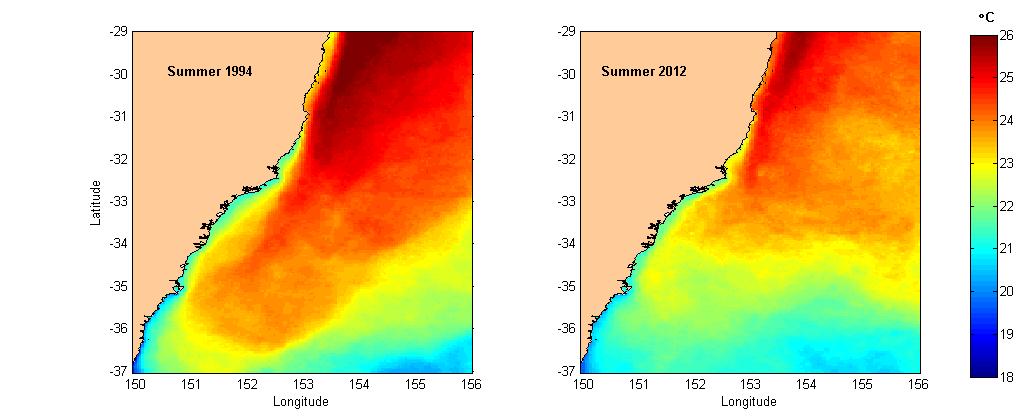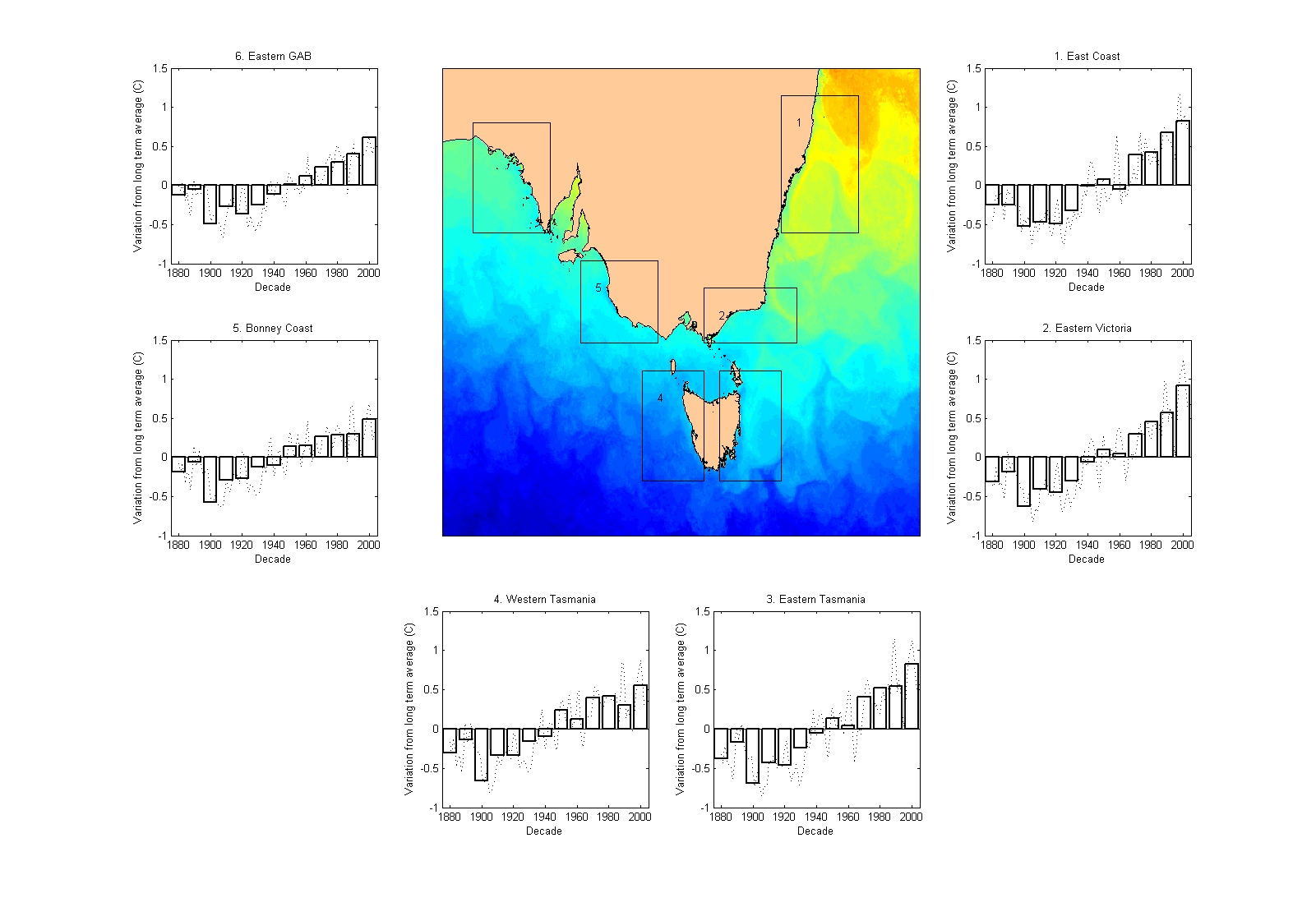Sea temperatures and climate change in New South Wales
Dr Alistair Hobday and Jason Hartog (CSIRO).
Many coastal waters around Australia are warming up, according to monitoring by the CSIRO Marine and Atmospheric Research. And New South Wales is no exception.
Water temperatures off the coast of New South Wales have been recorded since the late 1800s and have revealed ocean warming over the past 50 years.
Since the 1960s, NSW sea temperatures have increased by 0.8°C above the long-term average. Southern NSW has experienced the greatest change and is considered part of the “Tasman Sea hotspot” for ocean warming (along with the east coast of Tasmania and eastern Victorian seas).
A small rise in water temperature doesn't sound like much, but for marine ecosystems it has a significant impact on the distribution and physiology of species. Marine species have their own set of conditions they prefer to live in, like temperature and pH. Some biota will move (if they can) - also known as shifting their range - in search of these conditions if things get too hot at home. Others may adapt well to warming seas; while some will not survive in the changing conditions.
The warmer oceans along Australia’s east coast are caused mainly by the extension and increased strength of the East Australian Current (EAC) bringing warmer water from the north.
The influence of currents on NSW water temperatures is variable. In the summer, the strength of the southward moving East Australia Current (EAC) regulates offshore water temperatures. A strong EAC results in warmer waters being carried southwards. This current can be wide and slow, or thin and fast. The EAC can be a continuous band of warm water, or a series of rotating eddies or circular features.
But a combination of cool water flowing upwards from the south and coastal upwelling can result in cooler water temperatures close to the coast, even when offshore waters are warm (see for example the images of water temperature in 1994 versus 2012). Patches of cooler water can also drift in from the east. And close to the coast, filaments of cool water are common when the current is fast and narrow.

Left image: A summer on the NSW coast with a narrow current (1994). Right: A summer with a wide current and cooler waters flowing up from the south (2012)(Image: CSIRO).
The interaction of a warm EAC flowing south and cooler waters close to shore means a dramatic contrast in temperature moving offshore, and results in very different fish communities along the coastline compared to further out to sea.
What effect will any future rise in temperatures have on NSW marine ecosystems? It is possible that a strengthening of the EAC and climate change may take warmer waters - and more warm water marine life - further south.
A more tropical New South Wales will lead to changes in biodiversity, population connectivity, ocean productivity and the distribution of pelagic species (those living in the open sea) in particular. Already some biota like coral trout, butterfly fish and angelfish are being observed further south than usual on the NSW coastline.
It’s no wonder some marine animals are being spotted away from their usual range along Australia’s coastline, possibly looking for cooler waters?
For more information see: http://www.csiro.au/resources/CAF-working-papers.html
(Story edited by: Yvette Barry)

Above: changes in Sea Surface Temperature (SST) since 1880 for southern and eastern Australia (CSIRO). Notice in the graphs, that water temperatures start rising above the long-term average after about the 1960s (Image: CSIRO).
Acknowledgement: Data shown in these images represent the temperature of water at the surface and are collected by satellite, and processed at CSIRO by Chris Rathbone and colleagues. Further information is available at http://oceancurrent.imos.org.au/. Images and movies prepared by Alistair Hobday and Jason Hartog (CSIRO).
Sketch of thermometer: Elsa Gartner, IMAS.











